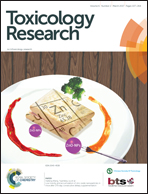Cigarette smoke extract induces the epithelial-to-mesenchymal transition via the PLTP/TGF-β1/Smad2 pathway in RLE-6TN cells
Abstract
Aim: The role of phospholipid transfer protein (PLTP) in the pathogenesis of the cigarette smoke extract (CSE)-induced epithelial-to-mesenchymal transition (EMT) has not been well described. In this study we investigated the effect of PLTP on the CSE-induced EMT of rat alveolar epithelial cells (RLE-6TN). Methods: The rats were exposed to air and cigarette smoke (CS) for 3 d and then the lungs were sectioned and examined using immunohistochemistry techniques. RLE-6TN cells were treated with different concentrations of CSE. PLTP siRNA was transfected into cells or SB431542 – an inhibitor of the transforming growth factor-β1 (TGF-β1) type I receptor – was administered prior to CSE exposure. The expression of EMT markers and PLTP was detected by qRT-PCR. The levels of PLTP, TGF-β1, p-Smad2, Smad2, and EMT proteins were analyzed by western blotting. Results: Lung injury and EMT were accompanied by up-regulation of PLTP and TGF-β1 in the CS-exposed rat model. EMT was induced by CSE in vitro, and the expression of PLTP, TGF-β1, and p-Smad2 was significantly increased after exposure to CSE (P < 0.05). Moreover, knockdown of PLTP and blocking of the TGF-β1/Smad2 pathway restrained the CSE-induced activation of the TGF-β1/Smad2 pathway and partly inhibited EMT by reversing E-cadherin expression and retarding the induction of N-cadherin and vimentin. In contrast, SB431542 had no effect on the expression of PLTP, while it ameliorated CSE-induced EMT. Conclusion: PLTP promotes the CSE-induced EMT process, in which the TGF-β1/Smad2 pathway is activated.


 Please wait while we load your content...
Please wait while we load your content...